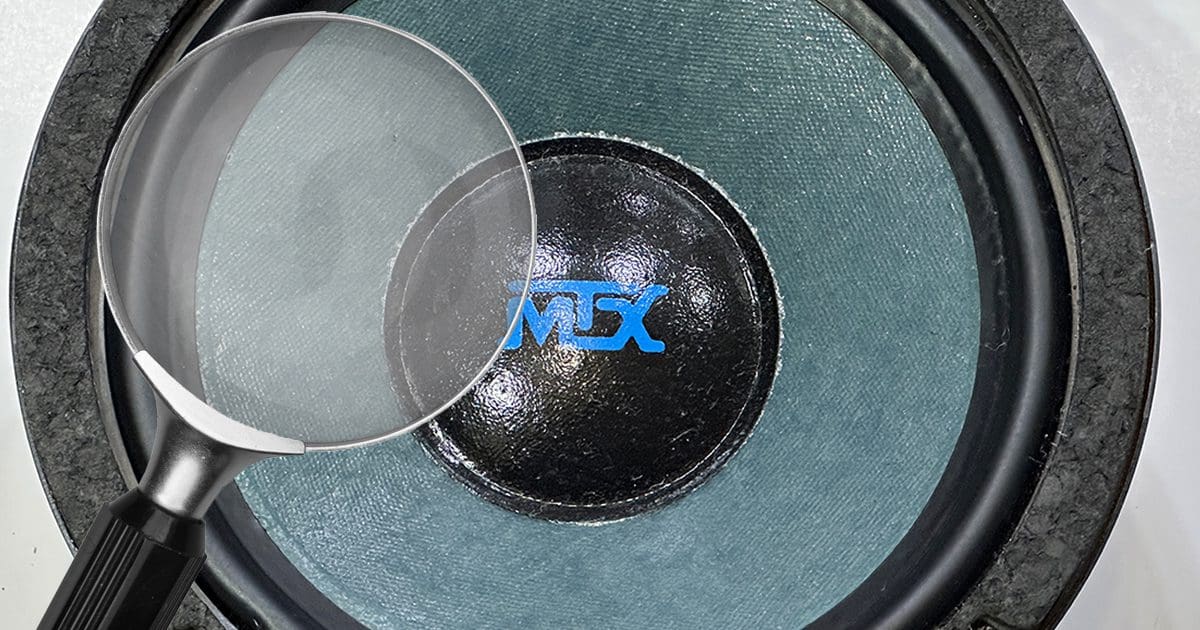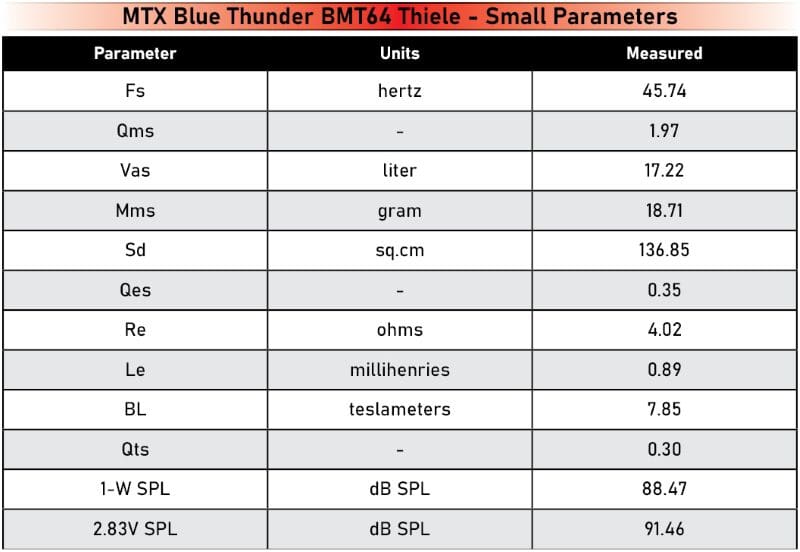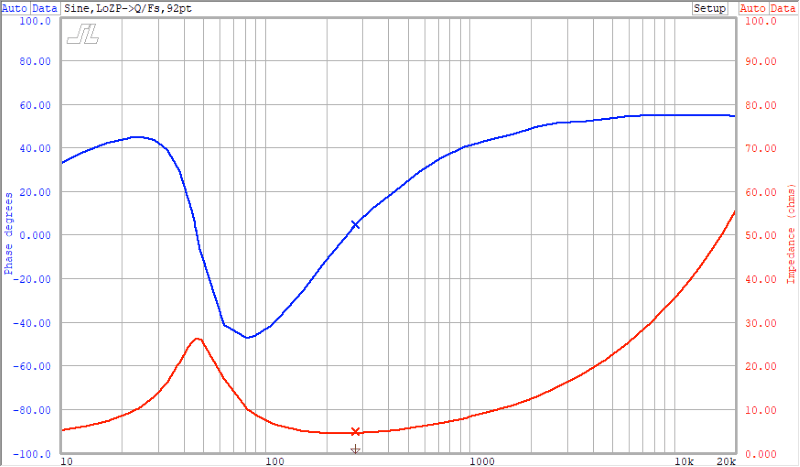I purchased a pair of MTX 6.5-inch woofers around 1992 or 1993, and they were installed in my 1991 Mazda 323 hatchback as midbass and rear-fill drivers. Later, they migrated to a set of “home speakers” with an Audax tweeter, though I don’t think I spent much time listening to them after I finished building them. Unfortunately, those speaker enclosures were thrown out after they got wet, and the woofers have sat on various shelves in my lab for the last decade or so.
From some quick research, this driver is called the BTM64, and logically, MTX called this a woofer instead of a subwoofer or midrange driver. The power rating is 120 watts, and the frequency response was given as 35 hertz to 3 kHz with an efficiency of 88 dB at 1W/1M. According to the 1993 car audio buyer’s guide I was referencing, these had a retail price of $89.95 U.S. each. Unfortunately, I can’t find any published Thiele/Small parameters, so I don’t know what the Xmax specification was on these.
The woofer features a very large ceramic magnet. It’s larger than some subwoofers I’ve seen. The basket is stamped steel with four ribs embossed into the spokes for added rigidity. The cone appears to be a treated pulp paper, and the drivers use a rubber surround. Given their three-plus decades of existence, they’re in good shape with minimal fading on the blue cones. It’s worth noting that these drivers use a cupped spider. It will be interesting to see if that affects their performance at high volume levels.
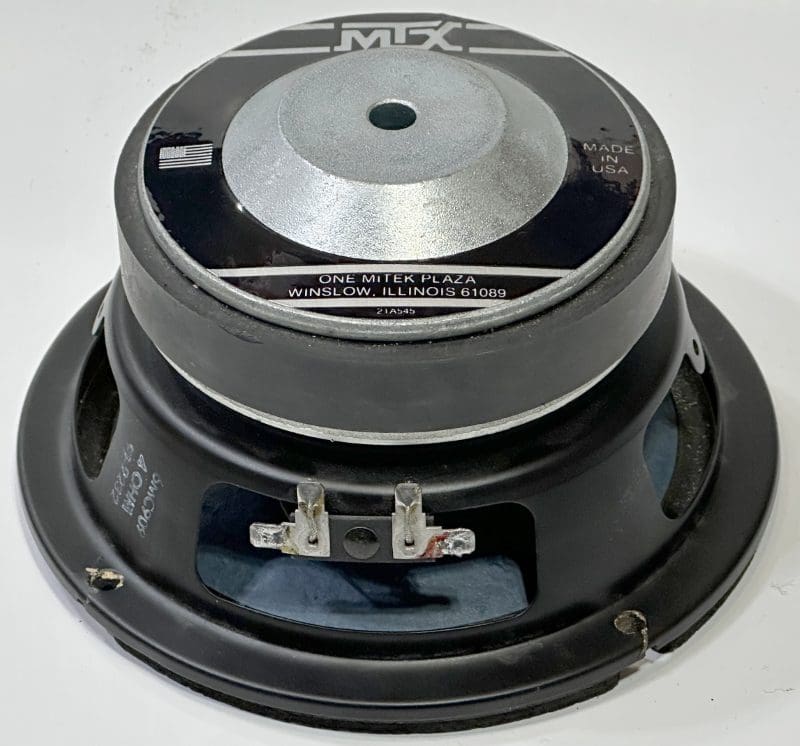
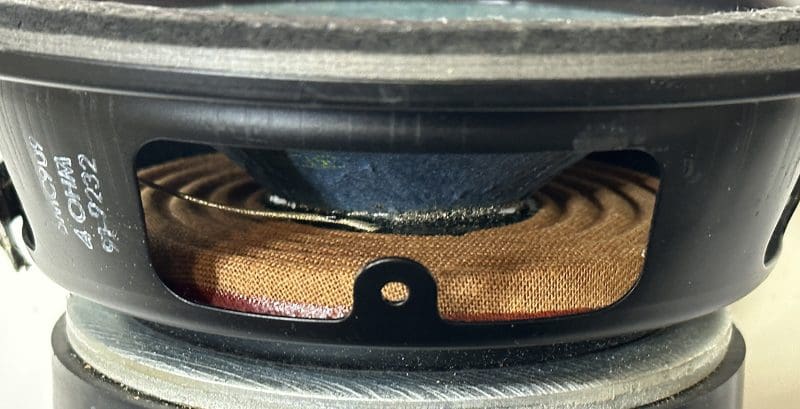
MTX Blue Thunder Thiele/Small Parameters
There’s no need to break these speakers in as they’ve been well-used over their lifespan. Instead, I connected the chosen driver to my Smith and Larson Woofer Tester II and used the Added Mass process to calculate the Thiele/Small Parameters so that I could do some enclosure simulations.
The first thing worth observing is that this driver has a lower resonant frequency (Fs) than usual for a driver from a 6.5-inch component set. This low Fs will help with low-frequency extension. The total Q (Qts) is nice and low at 0.3, so there won’t be a bump in the lower bass. Inductance is high at 0.89 millihenries, which is to be expected from a driver with a relatively large voice coil assembly and high power handling numbers. In all, as a woofer, everything makes complete sense.
The impedance plot (shown below) echoes the above statements. The peak at the resonant frequency is small, and the inductance shows a significant rise on the right side. There aren’t any considerable bumps in the impedance or phase trace, but you can see some waviness above 1 kHz. We’d suggest that the driver should sound good up to about 800 hertz, so it would be best used in a midbass application with a good quality midrange driver with a ~300-hertz crossover.
Driver Applications
Based on the Thiele/Small parameters, BassBox Pro suggests that a well-damped enclosure with a Qtc of 0.683 and an F3 frequency of 120 hertz would be 0.111 cubic foot. The driver would perform much better in a 0.194-cubic-foot vented enclosure tuned to 57 Hz. In this application, the -3 dB frequency is 78.82 hertz. In a door application where the compliance relies on the driver’s suspension, the midbass output from 100 to 300 hertz would be decreased slightly from the red trace. Of course, the lack of excursion control would increase output efficiency, but also distortion fromincreased excursion.
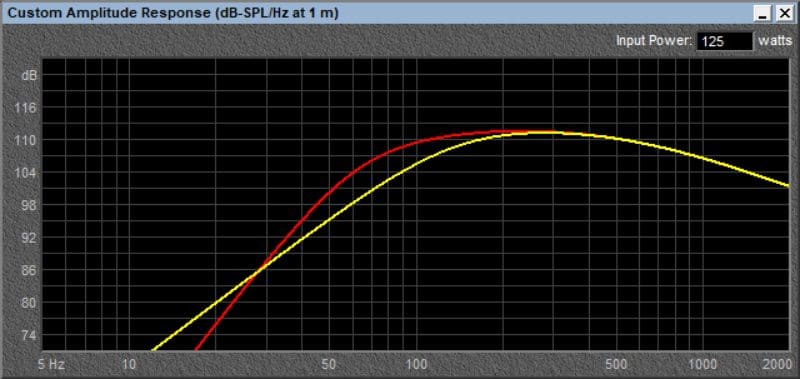
Measuring Frequency Response and Distortion
With the driver set up in our test enclosure, it was time to start performing sweeps and quantifying distortion content. As with the previous test, I have placed the microphone capsule 12.5 cm (4.92 inches) from the test enclosure mounting surface. The purpose is to help reduce room reflections’ effect on the measurements. This proximity alters the measured efficiency of the driver. No, this MTX woofer doesn’t produce 106 dB of output when driven with 1 watt. To calculate the 1-meter efficiency, you can subtract 18 dB from the vertical scale on each chart. Not surprisingly, this matches the calculated 88 dB 1-W/1-M specification. I admit, I like it when the predictions match the measurements accurately.
Our first sweep was taken at a drive level of 0.1 watt. The graph shows that the fundamental output is pretty smooth, from 100 to 1,500 hertz. You can see a spike in the third-order harmonic distortion around 1 kHz, which transfers perfectly to the spike in output around 3 kHz. At 100 Hz, total distortion is good at approximately 0.35%. The peak at 1 kHz represents exactly 1% distortion as the amplitude is 40 dB below the fundamental. You’d want to avoid that 1 kHz frequency, so a 750- to 800-hertz low-pass filter would be ideal.
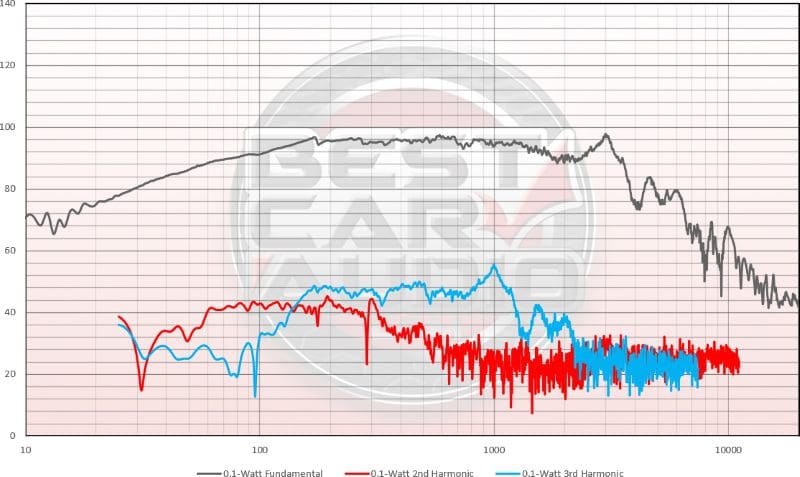
Let’s increase the output by about 5 dB to 0.316 watt. We can see that the second-order distortion below 300 hertz has increased in output to match the third-order amplitude. The driver produces about 0.56% distortion across most of the audio band. The resonance at 1 kHz hasn’t changed much. Things should still sound reasonably clear.
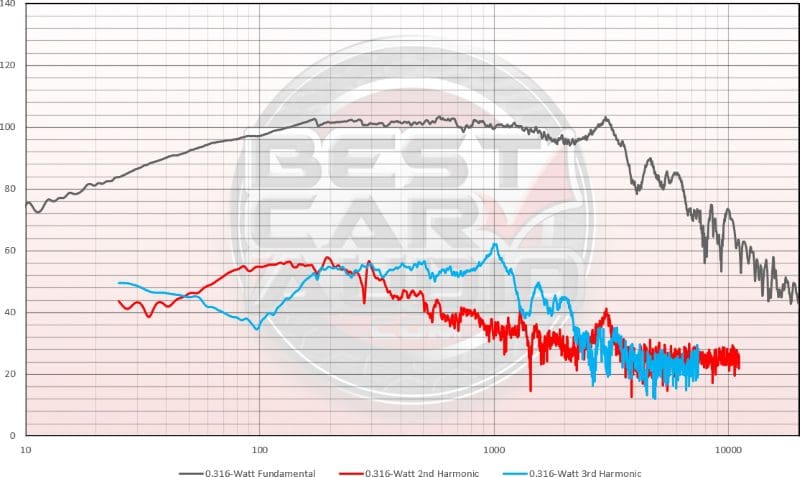
Let’s jump up to 1 watt of power to see how the Blue Thunder woofer behaves. The second-order harmonic content in the lower midrange region is starting to become an issue. The driver produces about 1.3% THD at 100 hertz and 0.89% at 200 hertz. This would begin to have an audible effect on midrange frequencies, though it’s far from a disaster.
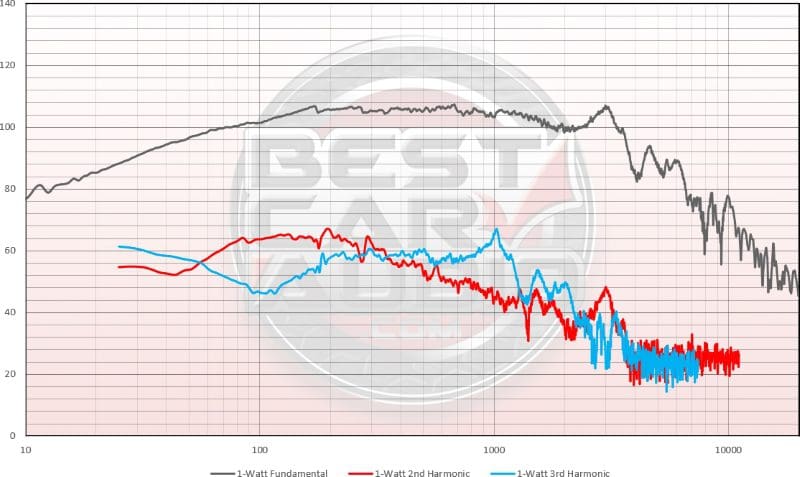
Turning things up roughly 6 dB to 3.98 watts continues the increase in second-order harmonic distortion. As a reminder, for every frequency reproduced, the driver adds content at the double the fundamental frequency. If you play music with a 100 Hz tone, the driver adds output at 200 Hz. When the third-order harmonic content is higher, like at 1 kHz, the driver adds output at three times the fundamental frequency, which would be 3 kHz. This is why it’s much more difficult for installers to equalize speakers that produce a lot of distortion. At 3.98 watts, harmonic distortion at 200 hertz is now at just over 2%. So, if your installer increases an equalizer band centered at 200 Hz by a few decibels, that also increases the output at 400 hertz by a tiny bit. They can end up chasing their tails to make a system sound good.
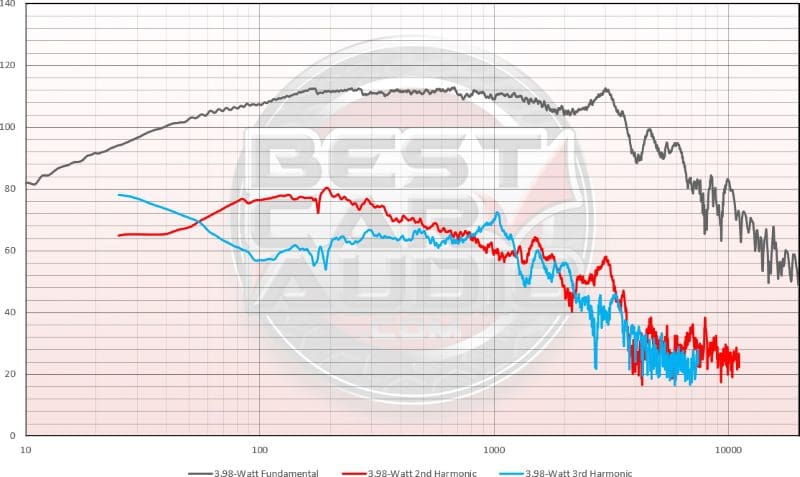
When we looked at the Skar midrange in the last speaker distortion article, I applied 1/12-octave smoothing to the measurements to make them easier to read. Unfortunately, this also started to hide some issues at higher drive levels. For the MTX woofer, I haven’t applied any smoothing. If we look at this measurement at 7.95 watts, we can see fuzziness from 50 Hz to 100 Hz, resulting from extreme third-order harmonic distortions from 10 to 35 Hz. As is typical of any door-mounted woofer, you want to use the speakers where they are happiest in terms of their output and distortion characteristics. So, a high-pass filter around 50 hertz for anything more than 4 watts will help keep things clean. Otherwise, we don’t see anything dramatic happen at 7.95 watts. Distortion at 200 Hz is now at 3.2%.
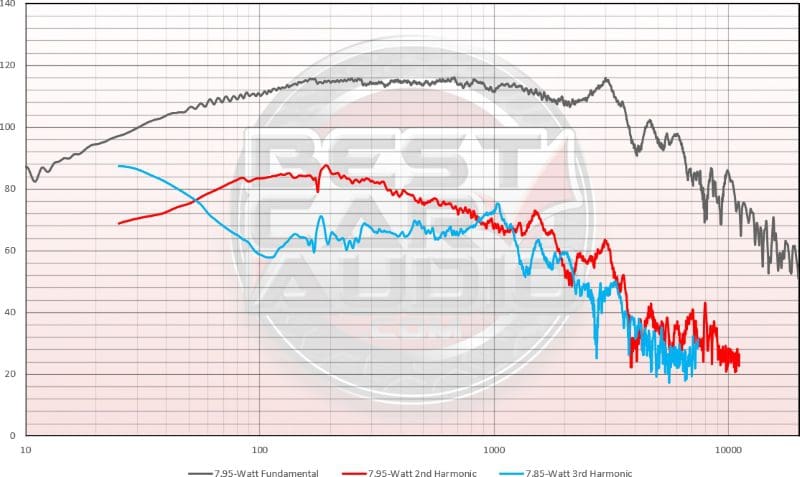
OK, now we’re at a drive level roughly equivalent to what a typical radio could produce with 15.85 watts to our speaker. You might find some radios that can reach 22 watts, but that’s only another 1.5 dB of output. The fuzziness between 50 and 100 hertz is a touch worse, as the distortion at 25 Hz is at 61%. This means that the driver is adding content at 75 Hz, just 4 dB quieter than what it produces at 25 Hz. You don’t want to use this driver as a subwoofer. Up at 200 Hz, we now have second-order harmonic at just under 5.5%.
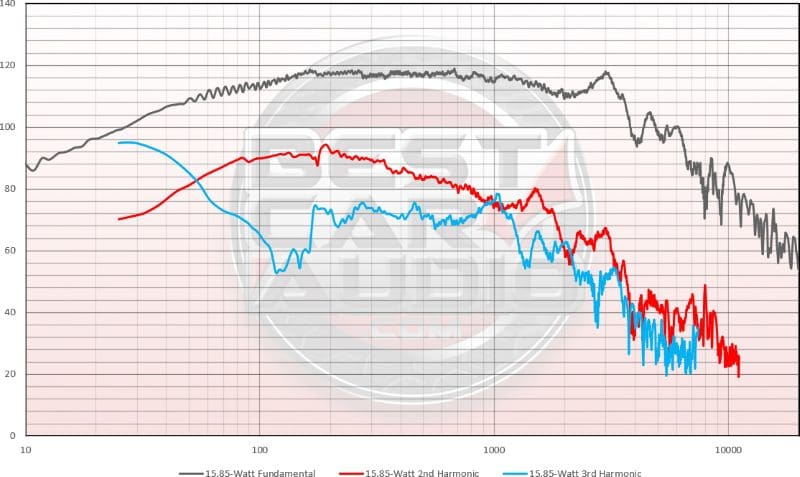
Bumping the drive level to 31.7 watts shows that second-order distortion is the prominent issue across the usable range. Without getting too technical, prominent second-order distortion is typically caused by non-linearities that are not symmetrical in the forward and rear-ward cone positions. This distortion could be the effect of the cupped spider providing non-symmetrical compliance at these higher drive levels. Things have become noticeably worse when comparing the distortion graph at 31.7 watts to the 15.85-watt level. At 200 Hz, we are now seeing over 8.2% distortion. The driver would sound harsh at this point.
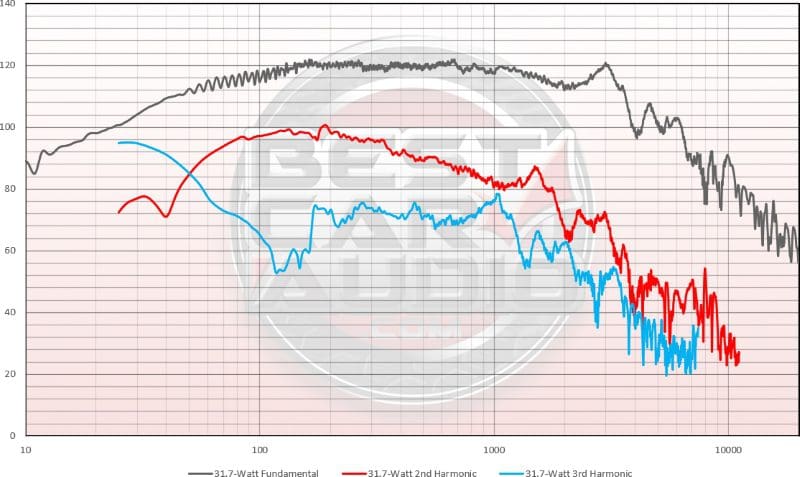
Now we’re in the land of a moderately powerful amplifier with 63.1 watts going to the woofer. We can see that the level of the third-order harmonics has jumped significantly and will now be a contributing factor to the speaker’s output. A symmetrical non-linearity in the system likely causes these second-order harmonics. It could be that we are reaching the limits of the spider or the surround or that the voice coil is leaving the gap and causing a reduction in motor force. As a result, we have over 16% total harmonic distortion at 200 Hz, and the output would sound quite harsh and audibly distorted.
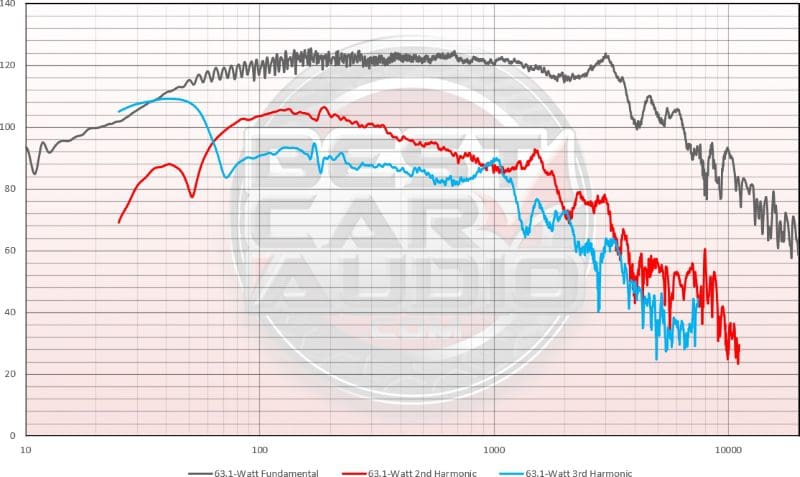
At the highest test power level of 126 watts, we see more than 100% THD below 50 Hz. This explains the extreme fuzziness from 50 Hz to 5 kHz. Under no circumstances would you want to use this driver at this power level without a steep high-pass filter at nothing below about 75 or 80 Hz. Second-order-harmonic distortion remains around 14% to 16% at 200 Hz. We are well beyond where this driver sounds good.
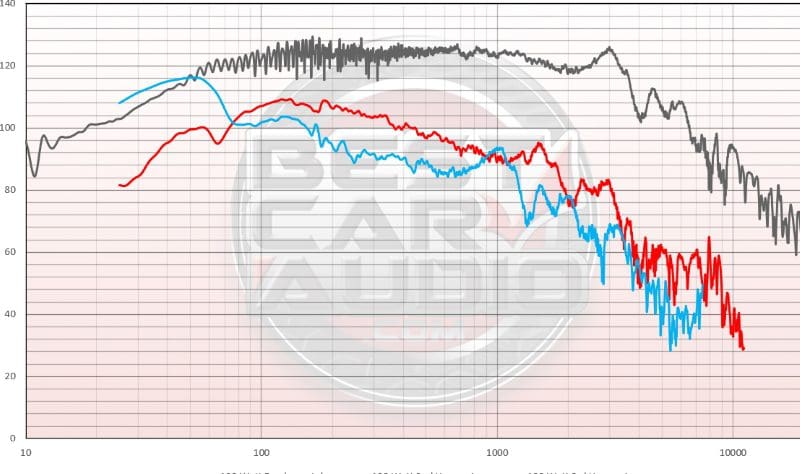
Understanding How Technology Improves Speaker Performance
One of the reasons I chose this speaker for a test was because it contains no distortion-reducing technology, making it similar to many products on the market. There is no shorting ring, no copper cap on the T-yoke, and it has a cupped spider. Soon we’ll get to testing a more modern speaker design that includes these technologies to make your music sound much better. In the meantime, if you’re serious about the quality of your audio system, drop by a local specialty mobile enhancement retailer and audition some speaker options for your car or truck. Be sure to listen to them loudly to pick out the differences in clarity.
